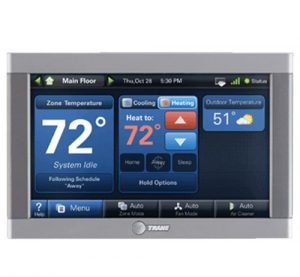You’ve done it! You’ve just purchased your first home. Congratulations! You’ve successfully made it through the long process of finding and securing your first mortgage, found the perfect home for you and made it through the sometimes torturous waiting period from offer and acceptance to closing on the home. This is truly something to celebrate. Likely, there are some things you’ll probably want to change about the home when you first move in.
Once you have those keys in hand, you probably want to jump right in on those projects and upgrades to truly make the home yours. However, it can’t be stated enough that there are many safety steps and familiarizations you should be making with your new home as a first step. These can ensure you and your loved ones stay safe in your brand new home. We’ve listed a few below to help you get started.
· Know where the water shutoff valve is located. Water can be a dangerous thing to any home. When you have a water emergency, the first immediate step should be to shut off the water coming into your home by turning the main water shutoff valve to the off position. To do so, you obviously need to know where that is located. If your home inspector did not show you during the home’s walkthrough, be sure to locate it yourself so you can be prepared for any water mishap. In addition, make sure your main water shutoff valve and all valves located throughout the house are in proper working order and made of durable materials. We recently just wrote about the importance of making sure your water shutoff valves are up to par in terms of performance and durability, so that post is a great place to start with this process.
· Know where the gas shutoff is located. Perhaps more important than knowing the location of the main water shutoff valve is knowing where the gas shutoff is located in the home. Regardless of the type of fuel, it’s extremely important to not only know the location of the gas shutoff, but the process to actually shut it off. You likely have many different appliances that use this gas—whether your heating system, your water heater or washer and dryer. Shutting off the main gas line to your house can help avoid serious safety hazards in the case of an emergency.
· Call 811 before digging a hole. Have a big landscape project on your mind for your new front or back yard? Make sure you know where the gas, water and electric lines are that run from the street to your home. By calling 811, which is a national dig-safety hotline, you can begin the process of identifying where these pipes are so you can be sure to avoid them. This service connects you to local contractors that can let you know where your pipes are located. In our area, you call also call BelRed directly and we can help you with this process.
· Know the contents of your inside walls. You likely have a lot of new (or old) wall art, pictures and more to hang on those bare walls in your brand new home. You may want to start drilling holes right away to hang these items or install hanging shelves and closet systems. However, if you’re “drilling blindly,” there’s a chance you could hit something hidden inside the walls, such as plumbing pipes, ductwork, wires, or cables.
Again, congratulations on making the exciting step into homeownership. There are many safety tips of which to be aware for your new endeavor aside from those listed above, so please take every necessary precaution as you familiarize yourself with your new home. If you need help, contact us!







